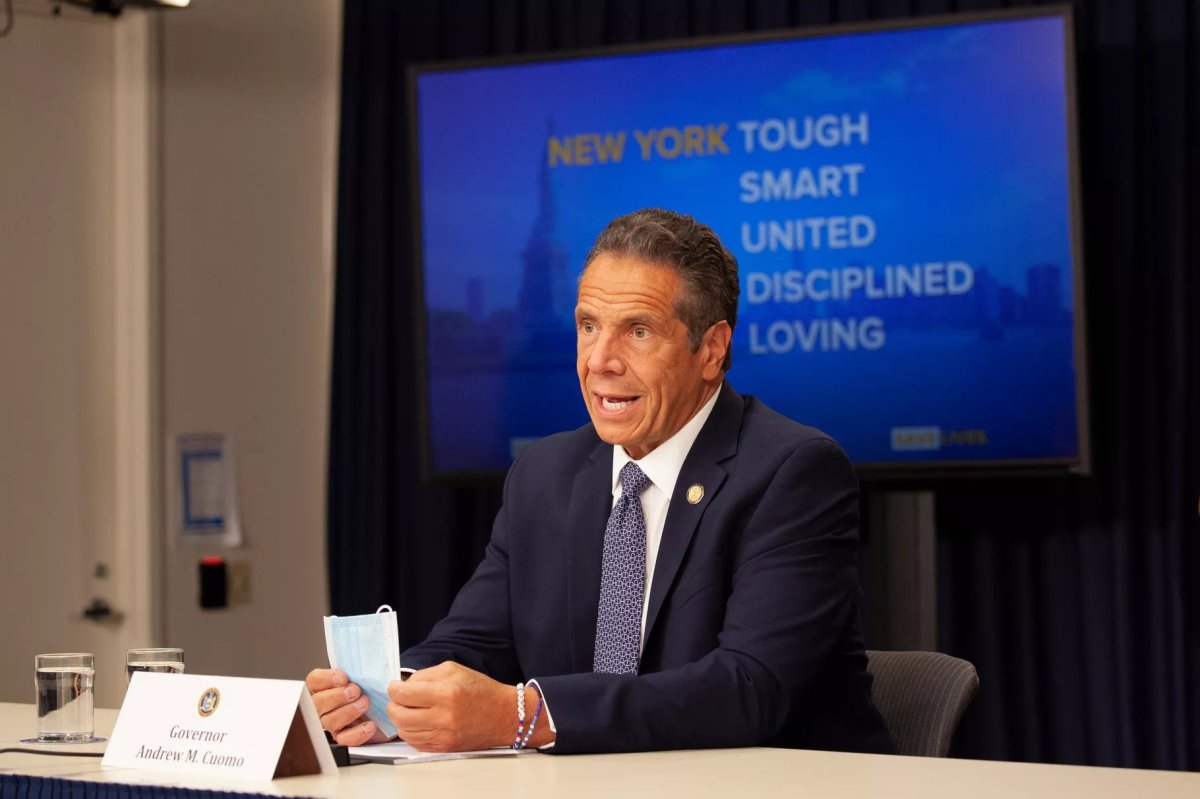BY GREG DAVID AND JOSEFA VELASQUEZ, THE CITY. This article was originally published on by THE CITY.
Last week, Ralph Fasano got the news every nonprofit that relies on state aid fears.
The state Office of Mental Health told Fasano, the executive director of Concern for Independent Living, that he needed to be prepared to return some of the funding he had just received to pay for the housing and services his organization provides to the mentally ill and others in supportive housing.
Similar nonprofits upstate that have contracts with local counties saw 20% of their most recent reimbursement withheld because of the state’s budget crisis.
“They said it could be comparable to the 20% withheld from the counties and said it could be less or more,” said a frustrated Fasano, who operates in The Bronx and Brooklyn as well as on Long Island. “We couldn’t cut back a little. We’d have to disband programs.”
Three months after the Legislature and Gov. Andrew Cuomo agreed on a state budget that called for spending $10 billion more than the state expected in revenue, small cutbacks in local aid are being instituted.
But the governor’s approach remains the same: wait to see if the federal government will provide billions in aid to fill the gap — and put off major spending reductions as long as possible. Meanwhile, some — including Rep. Alexandria Ocasio-Cortez (D-The Bronx, Queens) — are sounding a call to tax the rich.
As the U.S. Senate returns to Washington Monday, efforts to pass another aid bill are expected to intensify amid conflicting demands.
Democrats are under great pressure to insist on a major package for states and cities, but progressive groups are also lobbying hard for them to demand an extension of enhanced unemployment benefits.
The Trump administration and Senate Republicans want more funds for businesses and are opposed to the added jobless aid, making the outlines of any potential deal uncertain.
Massive Cuts Loom
Meanwhile, New York’s fiscal outlook is worsening. State Comptroller Thomas DiNapoli reported Thursday that tax receipts in June fell $475 million below the Cuomo administration pandemic-revised forecast and some $1.5 billion below last year.
The July report will be even more crucial because the state is expecting $8 billion in income tax payments that were deferred from April. It has borrowed $4.5 billion in expectation of receiving the money.
 @NYSComptroller/Twitter
@NYSComptroller/TwitterThe potential reductions would be unprecedented. If there is no federal aid, the governor has warned, the state will be forced to shrink local aid by as much as $8.2 billion. (The rest — a little under $2 billion — will come from cuts to state operations.)
The city could lose just over $3 billion, City Comptroller Scott Stringer has estimated — with the biggest impact on schools, where $11.4 billion in state aid would be slashed by $2.3 billion. When asked Wednesday whether the city’s budget projections were on track, Mayor Bill de Blasio replied, “I am very worried about state aid cuts.”
In a little-noticed budget release last week, the state revealed it had trimmed $360 million in local aid so far, mostly by withholding money from smaller cities and counties.
The state also announced that it would not issue a detailed plan for reducing aid until the end of September — six months into the state’s fiscal year and three months after the start of the fiscal year for the city, most school districts and many other local governments.
“The longer cuts are delayed the bigger they will have to be,” argued David Friedfel, state budget expert at the Citizens Budget Commission.
It comes down to budget math: If a school teacher costs a district $100,000 and the budget must be cut by the same amount at the beginning of the year, the district can lay off one teacher. But six months into the year, the district would have to jettison two teachers to save the same amount of money.
‘They’ll Move Next Door’
Many in the Legislature, which returns to Albany on Monday, want to close at least part of the gap by raising taxes on the wealthy.
The effort got a boost Thursday when Ocasio-Cortez announced she would lead an effort to win passage of a billionaires’ tax.
Did you know that there are 118 billionaires… in New York alone?
And that they’ve made billions more during COVID?
Did you know that the very workers billionaires rely on are going hungry & without healthcare?
This is wrong. If Trump cut their taxes, NY should pick them up. https://t.co/x5swN3cH43
— Alexandria Ocasio-Cortez (@AOC) July 16, 2020
During a conference call with reporters Thursday, the governor shot down the idea of a tax hike on high-income New Yorkers, arguing that it would cause them to leave the state.
“If they want a tax increase, don’t make New York alone do a tax increase and then just have the people move to Connecticut. Let the federal government pass a tax increase and let them apply it all across the country so you don’t hurt any one state,” Cuomo said.
“Because if you take people who are highly mobile and you tax them more than they’ll just move next door, where the tax treatment is simpler,” he added.
Democrats who control the State Senate convened a “revenue working group” charged with developing proposals on how to raise funds for the state.
“While we collectively work to get needed federal aid from Washington, there’s no question that substantial additional revenue action from the state will be necessary, whether next week or at a session soon thereafter,” said Mike Murphy, a spokesperson for Senate Majority Leader Andrea Stewart-Cousins (D-Yonkers).
Taxing Concerns
In any case, new taxes are unlikely to produce significant revenue in the current fiscal year. Since New Yorkers pay taxes based on the calendar year and not a fiscal year, any tax increase for 2020 would have to be retroactive to January.
New withholding rates would have to be increased twice as much as they would have in January for people with wages. Those paying estimated taxes have already made two payments and would be shocked with very high bills for September and January.
The most likely option is to make any tax increase effective Jan. 1, 2021. In that case, an Assembly-backed plan to increase the top rate paid on income greater than $2 million for a couple from 8.82% to 10.32% would only raise $1.4 billion annually and less than $400 million for the current year, the CBC estimates.
Changes to the sales tax such as broadening it to cover services, eliminating the sales tax exemption on clothing costing less than $110 per item or raising the rate could be implemented rather quickly. The clothing exemption costs the state $900 million a year.
A third proposal, to tax stock transfers, has come in for sharp criticism. “It isn’t just a bad idea but simply isn’t credible — it would be widely evaded if actually enforced,” said E.J. McMahon of the Empire Center.
Meanwhile, an Elizabeth Warren-style wealth tax — she wants to levy a 2% tax on people with assets over $50 million and 3% on billionaires — is unconstitutional, he added, since the state is prohibited from taxation of intangible property.
The amount of federal aid needed by state and local governments is enormous. Moody’s economist Dan White estimated last month that states and cities across the nation need $500 billion over the next two years to avoid massive layoffs that could reach four million.
 Photo Courtesy of Concern for Independent Living
Photo Courtesy of Concern for Independent LivingMeanwhile, Fasano of Independent Living is writing to congressional representatives pleading for aid to the states — especially a Republican congressman and strong supporter of President Donald Trump from Long Island, where the agency is based.
“Lee Zeldin has been to our programs and appreciates them,” Fasano said hopefully. “And he knows the impact of severe cuts.”
THE CITY is an independent, nonprofit news outlet dedicated to hard-hitting reporting that serves the people of New York.


































